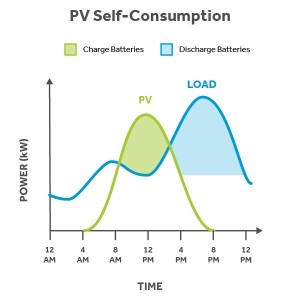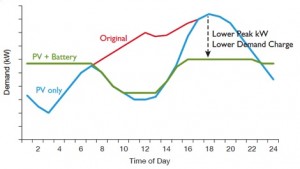Battery storage – the different use cases in Australia
The introduction of the Tesla Powerwall lithium ion battery has catalysed interest in the use of battery storage devices to help reduce electricity bills for sites connected to the electrical grid. This is in no small part attributable to the general perception that electricity network service providers in Australia are bad actors. As a result, there has been much hype about the topic of battery storage. The Powerwall commenced installation in Australia in January 2016 to much publicity.
While the prospects for the disruptive potential of battery storage are very enticing, their current economics are yet to produce the conditions for mass adoption. Below are listed the current five use cases for battery storage in Australia:
- Stand alone – this is the oldest and most common use case for battery storage. Battery storage has been used in conjunction with solar PV at remote installations around Australia for decades. It makes good economic sense when compared to the cost of running diesel generators or installing the infrastructure to bring grid power to a remote location. As the cost of batteries continues to drop, one can expect to see more storage installed with stand alone systems, reducing and eventually even negating the need for back up fossil fuel generators.
- Energy shifting – this is the use case where any excess energy generated by the PV system is saved in battery storage for later use in the day rather than being exported to the grid. This is the ‘killer app’ of battery storage that has been much hyped and directed towards the Australian household. The idea is that the majority of residential grid connected PV systems in Australia would use battery storage for energy shifting bringing about a revolution in the electricity market. Despite optimistic projections, it is questionable whether the immediate future will see a significant number of battery storage installations in Australia. . Unfortunately, this use case is currently just not justified by the cost of batteries and the savings they would provide. Payback periods would exceed the lifetime of the battery. Battery prices need to drop and tariffs to increase before energy shifting becomes economically feasible. The majority of those who do install battery storage will be early adopters.
- Grid augmentation – this is the use case where a site undergoes an expansion in its power requirements but has inadequate network infrastructure to service the new requirements. Rather than spend the money for infrastructure upgrades to the grid which the distributor then owns, solar power with battery storage can be used to provide for the additional power. This is an economically viable use case for storage. Payback periods can be quite attractive when considering the grid infrastructure cost forgone. The cost savings from energy shifting are also realised. Moreover, for the case where grid supply is of poor quality, storage can act as a buffer, providing electricity at stable frequency and voltage to prevent damage to sensitive equipment on site.
- Peak lopping – this is the use case where the site is on an electricity tariff that has a demand charge component. The demand charge is an annual charge that is set based on the maximum power draw of a site measured by the distributor over a specified period of time. It is intended to help distributors recoup the costs of network upgrades to meet the needs of large power usage customers. It acts as an incentive to prevent a ‘peaky’ energy usage profile at a site. The battery storage would discharge to provide the extra power required at times of peak power usage at the site. This leads to a more even draw of power from the grid. Tariffs with a demand charge component typically apply to commercial sites. However, distributors are currently lobbying regulators for all residential customers to be phased into a demand charge tariff over the next few years.
- Blackout protection – battery storage can act as a backup/uninterruptable power supply on the occasions when there is a grid failure. The capacity of storage required would depend on a site’s power usage and the length of the blackout. Most grid failures in Australia are in the order of a few hours unless they occur in a particularly remote location. If this is an issue at the at the point of supply, the cost of storage may well be justified when considering the potential loss of revenue for a business for instance.



